I have a dataset and want to visualize a horizontal stacked bar.
The problem is, each data columns of Promotors, Neutrals, and detractors, corresponding to each year (e.g., first, second, and so on) is meant to be 100 (e.g., sum of 21, 46.5, and 32.5 should be 100). However, my visualization result shows that it does not stack to 100.
Any advices? Thanks!
from matplotlib import pyplot as plt
plt.rcParams["figure.figsize"] = [10, 8]
year = ['first', 'second', 'third', 'fourth', 'fifth', 'sixth']
promoters = [21, 20.8, 21.8,27,24,20.5]
neutrals = [46.5, 56.0, 54.3,47.8,50.0,52.5]
detractors = [32.5, 23.3, 24.0,25.3,26.0,27.0]
b1 = plt.barh(year, promoters, color="darkseagreen")
b2 = plt.barh(year, neutrals, left=promoters, color="lightyellow")
b3 = plt.barh(year, detractors, left=neutrals, color="coral")
plt.legend([b1, b2, b3], ["promoters", "neutrals", "detractors"], loc="upper right")
plt.xlim([0, 100])
plt.show

